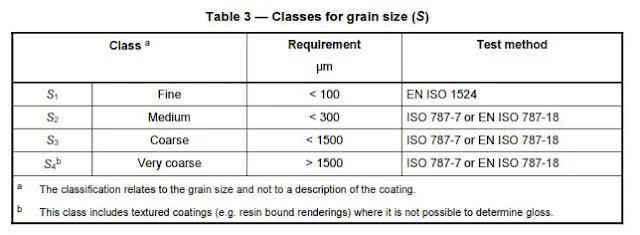WATERSTOP plays an important role in waterproofing a concrete structure, especially at joints, the weakest part which is liable to leakage of water or chemical liquids. So waterstops are designed as a fluid-tight diaphragm embedded in or running along the joints to solve these problems. Manufactured from various materials in a range of shapes and sizes, the waterstops are perfect for various types of applications as shown below:
1. Water and sewage disposal projects.
2. Liquid containment.
3. Dams, channels, tunnels and tanks.
4. Box culverts and locks.
5. Primary and secondary containment structures.
6. Bridges and decks abutments.
7. Wall and slabs.
8. Basements and foundations, etc.
Different
types of waterstop and their brief descriptions:
1. PVC waterstop, as the most common watertight type, features high tensile
strength, elongation capability and high resistance to acids, ozone, alkalis,
diesel oil, chlorinated water and other chemical liquids. Meanwhile, they will
not discolor the concrete or support even produce electrolytic action with
surrounding reinforcing steels.
2. HDPE waterstop is also a kind of extruded plastic watertight seal
similar to PVC waterstop, however, this one comes with harder and stronger
structure, higher abrasion ability as well as can withstand elevate and low
temperatures. Additionally, high resistance to hydrocarbon, acids, oils and
fuels makes it ideal for applications in fuel and hydrocarbon areas.
3. TPV & TPER waterstop is manufactured from recycled
thermoplastic elastomeric rubber and plastic materials. Comparing with
traditional PVC waterstop, this one has the characteristics of high resistance
against temperature, weather as well as chemical liquids such as ketones,
esters, glycols, alcohol, ozone, oils, solvents, hydrocarbon, etc.
4. Rubber waterstop is a hydrophobic water sealing products capable to
withstand high water pressure and absorb high movements of concrete joints.
Generally, SBR, neoprene rubber and natural rubber are the main materials for
manufacture of rubber waterstops, but as your request, other materials are also
available such as EPDM and silicone, etc.
5. Steel-edge waterstop is composed of central rubber part and steel
plate rings which are inserted into the rubber. This special design allows the
waterstop enable to subject to shear joint movements, structure sedimentation,
concrete shrinkage and creeps, etc.
6. Stainless steel waterstop, coming with excellent corrosion
resistance, prevents any passage of corrosive and aggressive fluids. Meanwhile,
this waterstop is extremely resistant to fire, high temperature and ozone, so
if you need waterstops for ozone contractor structures or chemical industries,
this one is your best choice.
7. Reinforced waterstop is designed to meet specific needs of strength
or water-proofing properties. As your requirements, waterstops can be reinforced
with internal steel plates, external steel bars and expansible strips.
8. PZ waterstop is mainly composed of high quality vulcanizate rubber
which makes it has physical properties of rubber in addition to expansible
ability. With smaller size, the PZ waterstops come with excellent liquid
resistance, stronger structure without elastic fatigue.
9. Bentonite waterstop, adds expansible bentonite to rubber base
material to form a hydrophilic watertight products with water absorption no
less than 300%. Meanwhile, it has great expansion control ability to avoid
losing the integrity of strip waterstops. Bentonite waterstop with expanded
metal is a new type water sealing product. The added expanded steel mesh (or
nylon mesh as your request) effectively enhances the tensile strength of the
waterstop and improves the overall construction quality.
10. Butyl rubber waterstop, as its name implies, is mainly composed of
butyl rubber materials as well as other additives such as mastic or expanded
clay. Also, as a kind of hydrophilic waterstop, it will expand when exposed to
water and other water solutions and form a permanent compression seal in
non-moving joints.
11. Mastic waterstop, different from all above strip waterstops, is a
hydrophobic self-component, self-sealing product that can withstand all types
of weather and harsh temperatures.
12. WPM SW: Swellable waterbar based on polymer technology and designed
for use in construction joints. WPM SW slowly swells in volume when in contact
with water and efficiently waterproofs the construction joint. The pressure of
the swelling action will cause the WPM SW to profile itself exactly into the
joint and effectively stopping water seepage, even at high external water
pressure. WPM SW is suitable for all construction joints subject to hydrostatic
pressure, on one or both sides. Movements in the joint (eg., shrinkage or
settlement in the substrate) are taken up by the elastic profile of the
waterbar.
Courtesy of : All details are collected from http://www.jointwaterstop.com/ and
few from google.
Take a look of waterstop, how they look like:
Look how they will be installed and where:
Look in how many profile waterstop are available:
Look what are the test conducted on the waterstop and what are the physical parameters are waterstop:
Is there any standard for waterstop? Yes, Indian Standard IS 15058. Let us see what the standard says:

























